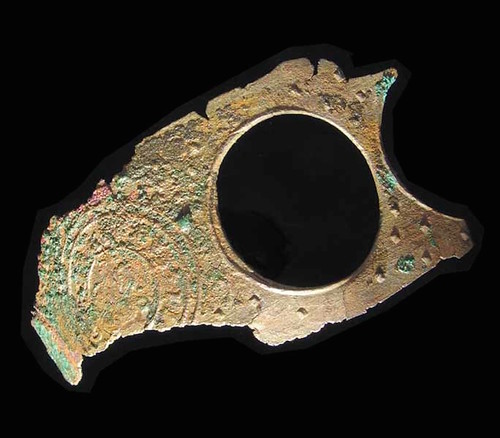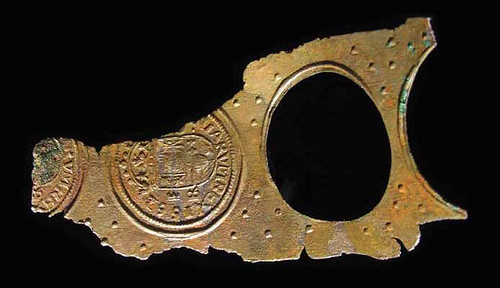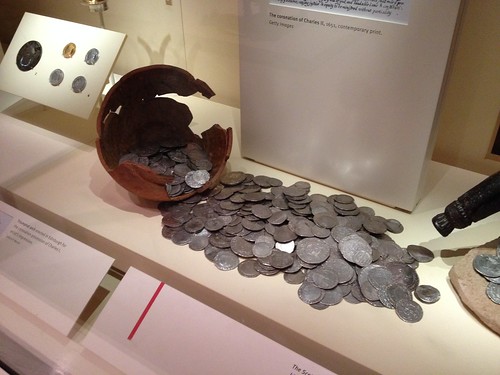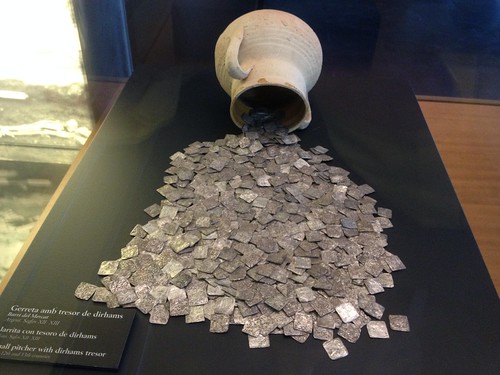
PREV ARTICLE
NEXT ARTICLE
FULL ISSUE
PREV FULL ISSUE
ON DATING ARCHAEOLOGICAL SITES USING COINSGary Beals, author of Numiscadero, the Spanish/English numismatic dictionary submitted these thoughts on dating archaeological sites using coins as evidence. -Editor

"A hiker in southern Utah has found what appear to be old Spanish coins possibly dating back to the time of the conquistadors and perhaps even earlier, long before the voyages of Columbus." There are some gaps here as many readers have already noted. Suspicion abounds regarding the unidentified tourist who found two Spanish copper coins. So far, there is not much journalistic detective work going on. First of all, just exactly where and how did this hiker find these coins? The park management is not talking, so far. And who is the hiker? The Spanish 16 maravedis coin from the 1600s could have come from Spain in the pocket of some explorer centuries ago - but that is highly unlikely. The medieval dinero burguese the smallest denomination from King Alfonso X's reign in Castilla y Leon of about 1280 is another story. No way it could have been loose change even here in Spain in the 1600s. Too many governments and monetary systems have been in use since it was issued. Both coins appear to have been buried long ago and since been in a protected environment. That's a clue to what has occurred here. Exactly where were these coins found? By that I mean were they in a dry cave? It does not seem like they could have spent decades out in the wild open countryside. Some clues: The coins have not been exposed to much weather in recent years, in my opinion. The numismatic value of the two coins is perhaps $30. Both coins appear to be genuine - either is a type worth faking. The low numismatic value makes tomfoolery more likely, however. As was already suggested, the idea of a bit of historical horseplay is quite possible here. Because I am a serious numismatist but also a recovering smart-ass, I know it would be great fun to pull tricks on people with old coins. I would like to focus my comments and questions on coin damage created by burial or being hidden away in some manner. Patina tells us a lot about what a coin has been doing as the decades roll by. I am no specialist on coin corrosion but the topic is interesting. This quick report poses more questions than answers. CASE STUDY


CASE STUDY
Here is the coin getting a vertigris removal treatment. Alas, the bits of shinny original patina were lost in further processing, but they copper cancer was stopped. You can see that the coin has no wear whatsoever, even as the luster was lost. I would guess than the coin was face down in the dirt because the vertigris is worse on that side. The reverse had only a bit of corrosion on the upper area and it The silver wire brush treatment previously lasted only a year or so. NOTE: I sent in photos and info on this coin a few years ago. 


CASE STUDY

This pottery jug held a small hoard of silver coins in Scotland

This pot held silver coins in Spain
CASE STUDY
There are those who criticize some of the cleaning treatments archeologists do on coins. But in this case we see exactly how those coins looked just as they were struck for more than 1600 years ago. No harm done. 
CASE STUDY

CASE STUDY

A wild idea: Someone could assemble a photo collection of example coins showing how various situations cause patina, tarnish and oxidation. (Tarnish being patina we don't like) This could include examples such as: • Silver coin buried with others in a pottery pot for 500 years
• Silver coin buried with others in a pottery pot for 100 years
• Silver coin buried in dry dirt for 500 years (desert environment)
• Silver coin kept in a wood cabinet indoors for 100 years
Well - you get the idea. Has a study like this already been done somewhere? -Editor
To read the earlier E-Sylum articles, see:

Wayne Homren, Editor The Numismatic Bibliomania Society is a non-profit organization promoting numismatic literature. See our web site at coinbooks.org. To submit items for publication in The E-Sylum, write to the Editor at this address: whomren@gmail.com To subscribe go to: https://my.binhost.com/lists/listinfo/esylum All Rights Reserved. NBS Home Page Contact the NBS webmaster 
|